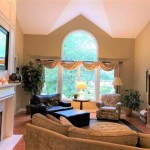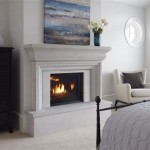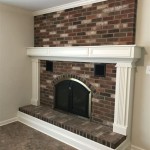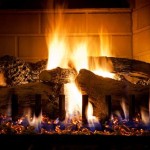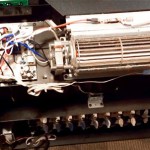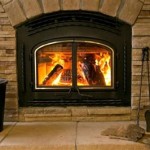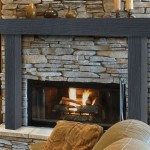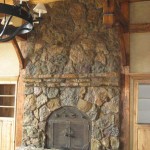Natural Gas Wall Fireplaces: A Comprehensive Overview
Natural gas wall fireplaces have emerged as a popular heating and aesthetic solution for modern homes. They offer a blend of convenience, efficiency, and visual appeal, providing a comforting ambiance without the mess and maintenance associated with traditional wood-burning fireplaces. This article explores the various aspects of natural gas wall fireplaces, delving into their benefits, installation considerations, safety features, and maintenance requirements.
Benefits of Natural Gas Wall Fireplaces
The advantages of choosing a natural gas wall fireplace are multifaceted, impacting both convenience and cost-effectiveness. These fireplaces offer a distinct set of benefits compared to wood-burning or electric alternatives, making them a compelling option for many homeowners.
One of the primary benefits is the ease of use. Natural gas fireplaces typically ignite with the push of a button or the flip of a switch. Many models come equipped with remote controls and programmable thermostats, allowing users to adjust the flame height, heat output, and operating schedule with minimal effort. This level of control provides a consistent and comfortable heating experience.
Another significant advantage is the efficiency of natural gas fireplaces. They are generally more efficient than traditional wood-burning fireplaces, converting a higher percentage of fuel into usable heat. This increased efficiency translates into lower heating bills and reduced energy consumption, contributing to both financial savings and environmental responsibility.
Furthermore, natural gas fireplaces produce minimal emissions compared to wood-burning fireplaces. Burning wood releases particulate matter and other pollutants into the air, contributing to air pollution. Natural gas, on the other hand, burns cleaner, producing fewer harmful emissions. This is a significant consideration for homeowners concerned about air quality and environmental impact.
Beyond their functional benefits, natural gas wall fireplaces offer aesthetic appeal. They are available in a wide range of styles, from contemporary to traditional, allowing homeowners to choose a model that complements their existing décor. The realistic flames and ember beds create a warm and inviting atmosphere, enhancing the ambiance of any room. Wall-mounted options further contribute to a sleek and modern aesthetic.
Finally, natural gas wall fireplaces require less maintenance than wood-burning fireplaces. There is no need to chop wood, store wood, or clean up ashes. The only maintenance typically required is an annual inspection by a qualified technician to ensure that the fireplace is operating safely and efficiently. This reduced maintenance burden makes them a convenient option for busy homeowners.
Installation Considerations for Natural Gas Wall Fireplaces
Proper installation is crucial for the safe and efficient operation of a natural gas wall fireplace. Several factors must be considered during the installation process, including venting requirements, gas line connections, and compliance with local building codes. These considerations ensure that the fireplace operates safely and efficiently, minimizing the risk of hazards.
The first and foremost consideration is proper venting. Natural gas fireplaces require a venting system to safely exhaust combustion byproducts, such as carbon dioxide and water vapor, to the outside. There are two main types of venting systems: direct vent and vent-free. Direct vent fireplaces draw air from outside for combustion and exhaust the byproducts back outside through a sealed system. This is the preferred venting method as it minimizes the risk of indoor air pollution. Vent-free fireplaces, on the other hand, do not require venting. They burn very efficiently and release minimal byproducts into the room. However, vent-free fireplaces are subject to stricter regulations and may not be permitted in all areas due to potential air quality concerns.
Connecting the fireplace to a natural gas line is another critical aspect of the installation process. This task should only be performed by a qualified and licensed gas fitter. The gas fitter will ensure that the gas line is properly sized and connected to the fireplace, preventing leaks and ensuring a consistent gas supply. It is essential to adhere to all local gas codes and regulations during the gas line installation process.
Wall-mounted fireplaces require careful consideration of the wall structure. The wall must be capable of supporting the weight of the fireplace. In some cases, it may be necessary to reinforce the wall studs or add additional support to ensure that the fireplace is securely mounted. Professional installation is recommended to ensure that the fireplace is properly and safely installed on the wall.
Compliance with local building codes is paramount throughout the installation process. Building codes vary by location and may specify requirements for venting, gas line connections, and fireplace placement. It is the homeowner's responsibility to ensure that the installation complies with all applicable codes and regulations. Failure to comply with building codes can result in fines and require costly rework.
Finally, consider the placement of the fireplace. The location should be chosen to maximize both aesthetic appeal and heating efficiency. Avoid placing the fireplace near flammable materials or in areas where it could be easily obstructed. Ensure that there is adequate clearance around the fireplace for safe operation and maintenance.
Safety Features and Operation of Natural Gas Wall Fireplaces
Safety is a paramount concern when operating any gas-fueled appliance, and natural gas wall fireplaces are equipped with various safety features to mitigate potential risks. Understanding these features and adhering to safe operating practices is essential for protecting occupants and preventing accidents.
One of the most important safety features is the oxygen depletion sensor (ODS). The ODS is designed to monitor the oxygen level in the room. If the oxygen level drops below a certain threshold, indicating incomplete combustion and a potential buildup of carbon monoxide, the ODS will automatically shut off the gas supply to the fireplace. This prevents the release of dangerous levels of carbon monoxide, a colorless and odorless gas that can be fatal.
Another common safety feature is the thermocouple or pilot safety system. This system ensures that the pilot light is lit and functioning properly. If the pilot light goes out, the thermocouple will shut off the gas supply to the main burner, preventing a buildup of unburned gas. This is a crucial safety measure to prevent gas leaks and explosions.
Many natural gas fireplaces are also equipped with a pressure regulator. The pressure regulator maintains a consistent gas pressure to the burner, ensuring stable and efficient combustion. This prevents fluctuations in flame height and heat output, which can be caused by variations in gas pressure. A consistent gas pressure also contributes to the overall safety and efficiency of the fireplace.
Regular maintenance and inspection are essential for ensuring the continued safe operation of a natural gas fireplace. The fireplace should be inspected annually by a qualified technician. The technician will check the venting system, gas line connections, burner assembly, and safety features to ensure that they are functioning properly. Any necessary repairs or adjustments should be made promptly.
Proper ventilation is crucial for safe operation, even with vented fireplaces. Ensure that the venting system is clear of obstructions and that the room is adequately ventilated. Never block or obstruct the vents, as this can lead to a buildup of carbon monoxide. If you suspect a gas leak, immediately turn off the gas supply to the fireplace and contact your gas provider or a qualified technician.
Finally, it is important to educate all members of the household about the safe operation of the fireplace. This includes understanding the safety features, proper lighting procedures, and potential hazards. By taking these precautions, homeowners can ensure the safe and enjoyable operation of their natural gas wall fireplace.

Fire Ribbon Direct Vent Slim Gas Fireplace Spark Modern Fires

Napoleon Plazmafire 31 Linear Gas Fireplace Model Whd31

Napoleon Plazmafire 48 Direct Vent Gas Fireplace Toronto Best

Fireplace Insert Short Wall Google Search Natural Gas Contemporary

Gas Fireplaces Fireplace Xtrordinair Made In America

Fireplaces Gas Napoleon Whvf31 Plazmafire Wall Hanging Vent Free Fireplace

Advantages Disadvantages Of A Hanging Gas Fireplace Modus Fireplaces

Gas Fireplace X Fire 38 Acquisitions Fireplaces Contemporary Closed Hearth Wall Mounted

Gas Heating Stove Standalone 75 Ortal Usa Wall Mounted Contemporary Metal

Hole In The Wall Installation Guide Direct Fireplaces
Related Posts

